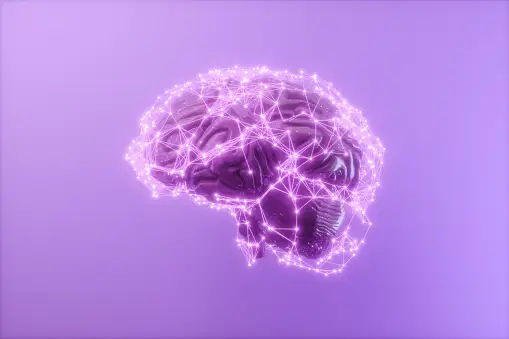Memory is a fascinating aspect of human cognition, allowing us to retain and recall information over varying periods of time. The phenomenon of long-term retention, in particular, sheds light on how memories endure and influence our lives. In this exploration, we delve into the mechanisms behind the endurance of memory, uncovering insights into long-term retention.
Understanding Memory
Before delving into long-term retention, it’s essential to grasp the basics of memory. Memory is the ability of the brain to store, retain, and recall information. It plays a crucial role in learning, decision-making, and shaping our identities. Memory is typically categorized into three main types: sensory memory, short-term memory, and long-term memory.
Sensory Memory
Sensory memory refers to the initial processing of sensory information from our environment. It is short-lived and provides a brief snapshot of our surroundings. This form of memory helps in perceiving the world around us and is essential for further processing.
Short-Term Memory
Short-term memory, also known as working memory, holds a limited amount of information for a short duration. It is involved in tasks requiring immediate recall or manipulation of information. Short-term memory is transient and can be quickly forgotten if not rehearsed or encoded into long-term memory.
Long-Term Memory
Long-term memory involves the storage of information over extended periods, ranging from minutes to a lifetime. It has virtually unlimited capacity and is responsible for retaining knowledge, experiences, and skills acquired over time. Long-term memory can be further divided into explicit (declarative) and implicit (non-declarative) memory.
Explicit Memory
Explicit memory involves conscious recollection of facts and events. It includes episodic memory, which pertains to personal experiences, and semantic memory, which stores general knowledge and concepts. Explicit memory relies on conscious effort for encoding and retrieval.
Implicit Memory
Implicit memory operates unconsciously and involves the retention of skills, habits, and conditioned responses. It includes procedural memory, which stores knowledge of how to perform tasks or activities, and priming, which influences perception and behavior without conscious awareness.
The Endurance of Memory
While all forms of memory are subject to decay and forgetting, long-term memory exhibits remarkable endurance under certain conditions. Understanding the factors that contribute to the endurance of memory can provide valuable insights into optimizing learning and retention strategies.
Encoding and Consolidation
The process of encoding converts sensory input into a form that can be stored in long-term memory. It involves attention, rehearsal, and meaningful association with existing knowledge. Consolidation is the stabilization of encoded information through neural processes, making it less susceptible to interference or decay. Effective encoding and consolidation enhance the endurance of memory by strengthening neural connections and facilitating retrieval.
Emotional Significance
Emotional experiences are often remembered more vividly and persistently than neutral ones. Emotionally charged events trigger the release of stress hormones, such as adrenaline and cortisol, which enhance memory consolidation. The amygdala, a brain region involved in processing emotions, plays a crucial role in prioritizing emotionally significant information for long-term retention. The enduring nature of emotionally salient memories highlights the influence of affective factors on memory durability.
Spacing and Retrieval Practice
Spacing refers to the distribution of learning trials over time, whereas retrieval practice involves actively recalling information from memory. Both spacing and retrieval practice promote long-term retention by reinforcing memory traces through repeated exposure and retrieval attempts. The spacing effect suggests that interleaving study sessions with intervals of rest enhances memory durability compared to massed practice. Retrieval practice strengthens memory retrieval pathways, making information more accessible and resistant to forgetting.
Sleep and Memory Consolidation
Sleep plays a vital role in memory consolidation, particularly for declarative and procedural memories. During sleep, the brain undergoes various stages of memory processing, including consolidation and integration of newly acquired information. Slow-wave sleep, characterized by synchronized neural activity, is associated with memory reactivation and synaptic consolidation. Rapid eye movement (REM) sleep is implicated in the consolidation of emotional and procedural memories. Optimal sleep duration and quality are essential for maximizing the endurance of memory.
Practical Implications
The insights gained from studying the endurance of memory have practical implications for education, training, and cognitive enhancement. By applying evidence-based strategies informed by memory research, individuals can optimize their learning experiences and improve long-term retention.
Effective Learning Strategies
Utilizing spaced repetition, interleaved practice, and retrieval-based techniques can enhance long-term retention of academic material and skill acquisition. Incorporating active learning methods, such as concept mapping and self-testing, promotes deeper encoding and better retrieval of information. Providing feedback and reinforcement during learning reinforces memory traces and facilitates consolidation.
Mnemonics and Memory Aids
Mnemonics are memory aids or techniques that facilitate the encoding and retrieval of information through meaningful associations or imagery. Mnemonic devices, such as acronyms, acrostics, and method of loci, capitalize on cognitive principles to enhance memory performance. By leveraging mnemonic strategies, individuals can overcome memory limitations and improve the endurance of memory for specific tasks or content.
Environmental Enrichment
Exposure to enriched environments, characterized by sensory stimulation, social interaction, and cognitive challenges, fosters neuroplasticity and enhances memory resilience. Enriched environments promote the growth of new neural connections and the formation of robust memory networks. Engaging in intellectually stimulating activities, hobbies, and lifelong learning pursuits can bolster cognitive vitality and mitigate age-related memory decline.
Conclusion
The endurance of memory is a testament to the remarkable adaptability and resilience of the human brain. By unraveling the underlying mechanisms of long-term retention, we gain valuable insights into optimizing learning, memory, and cognitive performance. By incorporating evidence-based strategies and interventions, individuals can harness the enduring power of memory to enrich their lives and expand their intellectual horizons.

